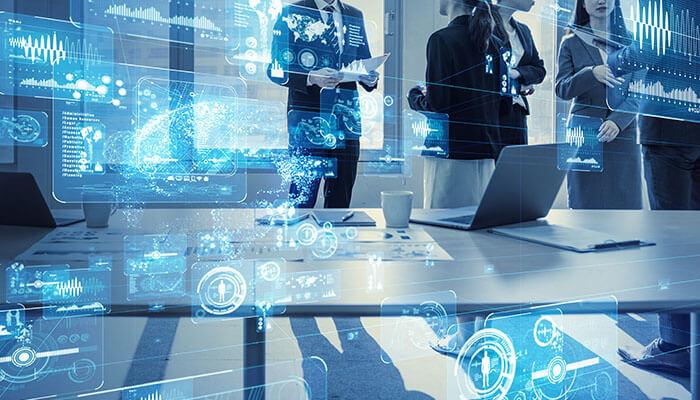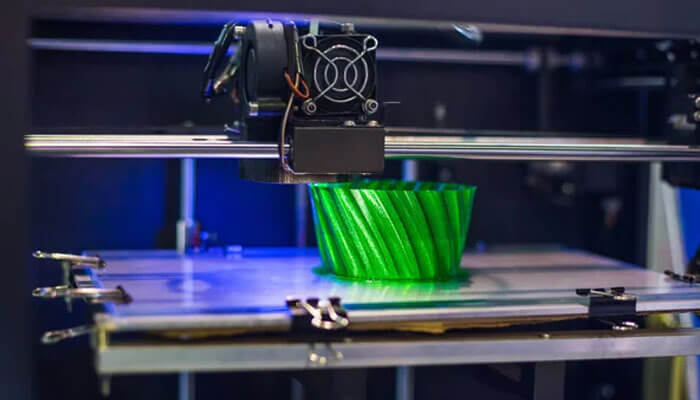The march of technological progress is happening at a furious pace. Over the past decade, innovations from computer vision to 3D printing have caused quiet (and sometimes not-so-quiet) revolutions in how the world does business. Predicting the future is hard, but here are six technologies that are changing global industry and will likely continue to generate change over the next few years.
1. Virtual Reality and Augmented Reality
It’s rare to see people walking around with VR goggles on their faces. Even so, virtual reality systems are improving productivity and safety. The same is true of the related technology called “augmented reality.” The difference is that while virtual reality is immersive, augmented reality systems (such as heads-up displays) layer digital data over the real world. Both can be used to enhance a worker’s capabilities. In construction, for example, a crane simulation program could give workers “hands-on” experience with potential safety issues digitally before facing them in reality. As computer processing ability continues to grow, the applicability of AR and VR will do the same.
2. Artificial Intelligence
Artificial intelligence (AI) has been everywhere in the news over the past few years. Most notably, generative AI in the form of ChatGPT has captured headlines. Generative artificial intelligence leverages machine-learning techniques to respond to human prompts. The most obvious application is in conversational digital assistants such as chatbots. The peril is equally visible. Artificial intelligence threatens to replace human creativity to a certain degree. There’s no AI Picasso, but artificially-generated text and video blur the line between fantasy and reality. Ethics developments should be watched closely over the next few years.
3. Office Virtualization
Related to artificial intelligence and machine learning is the virtualization of business processes. The radical connectivity allowed by cloud computing and the Internet of Things (IoT) is driving this process. Project management software is a prime example of this technology in action. Remote workers are now more capable of staying in touch and completing their tasks collectively due (in part) to these file-sharing applications. As telecom bandwidth increases, these applications become smoother in functionality. As more employers embrace the remote option for employees, these tools should become more widespread.
4. Additive Manufacturing
A (mostly) analog technology promising to cause subtle but lasting change is additive manufacturing. Known colloquially as “3D printing,” additive manufacturing systems can construct items from a CAD design by depositing feedstock material one ultra-thin layer at a time. In 2014, a tool was printed aboard the International Space Station. Currently, constructions are mostly limited to simple devices. As microtechnology and nanotechnology grow in capability, additive manufacturing will likely become far more sophisticated.
5. Biomimetic Technology
Sustainability is an inescapable facet of the contemporary business world. Renewable energy advancements are shaping policy, but they’re not the only sustainability technologies making a difference. Engineers are taking cues from nature to scale productivity in strange new ways. Biomimetic design (also termed biomimicry) means mimicking biological processes. Buildings can be designed like termite mounds to take advantage of natural cooling mechanisms. Lotus leaves naturally repel water, so engineers are starting to craft products using the nanostructure of those leaves as a template. As humanity gains knowledge of the inner workings of Earth’s ecosystem, the leverage of that knowledge will increase.
6. Commercial Aerospace
After a few inauspicious starts in the 2000s, the recent advance of commercial spaceflight has been rapid. The public often dismisses space infrastructure as a waste of resources that could be better spent on Earth. This concern is reasonable, but it’s also shortsighted. NASA has a website devoted to down-to-earth spinoff technologies resulting from spaceflight advancements.
Aerospace technology has one unique potential: to offer an end to scarcity. Earth’s resources are, by nature, finite. Harvesting resources from space-based sources includes the twin benefits of virtually unlimited supply and zero impact on the terrestrial environment. The catch is that this is a high-risk, high-yield venture, especially in the commercial realm. Even so, the rapidly declining cost of rocket launches makes the future of the aerospace industry look bright.
There’s no telling where the world will go from here. Technological change is limited only by human ingenuity. It seems definite that the digital revolution will continue, but ethical questions could reverse this trend. As always, the most vital resource in the world is the human element.




